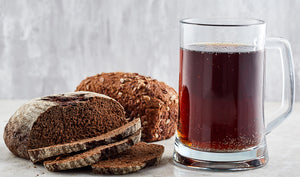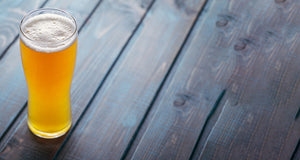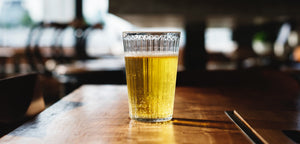Country of Origin

History
Scotland has a rich and long brewing history, dating back 6,000 years. Honey and heather beers, along with gruit ales (beers brewed with various spices and herbs), were common in the early days of Scottish brewing. In the 14th century, public breweries started popping up around the country, with the highest concentration of brewing happening in Glasgow & Edinburgh.
At this time, traditional Scottish Ale did not differ much from an English Ale. As brewing in Scotland and England became more modernized, the styles began to have two very distinct differences: Scottish Ales used less sugar, and fermented at lower temperatures. The lower fermenting temperature created a more lager style characteristic in the Scottish Ale, creating a less fruity taste than its English counterpart.
Scottish Ales were traditionally divided into distinct categories:
- Light (under 3.5% ABV)
- Heavy (3.5 - 4% ABV)
- Export (4 - 5.5%)
- Wee Heavy (over 6% ABV)
Scotch Ale is now synonymous with Wee Heavy and is a 20th century interpretation of the style, with American and Belgian influences. Scotch Ale/Wee Heavy is basically the Scottish Whisky version of the original Scottish Ale - marked with a distinct smokey flavour, most notably in the North American interpretations of the style, with a higher alcohol content (7 - 10%) than traditional Scottish Ale.
Profile
Scotch Ale can range in colour from a light copper to dark brown with good clarity. This ale has a thick tan head when poured that dissipates quickly. Caramel is the main aroma in this style, and many have hints of smoke from roasted malts. This style is not known for having a hoppy flavour or aroma, and should have a warmth from alcohol. Bitterness should be low to none with a sweet to dry finish.
Serving
Scotch Ale is typically served in a thistle glass around 50 - 57º F (10 - 12º C).
Food Pairings
This malt forward beer goes well with rich & fatty meats - lamb and venison are the most common meats to pair with this brew. Game birds also pair well with a Scotch Ale. For dessert, Scotch Ale pairs well with caramel and cream based desserts. Try a crème brûlée or a simple vanilla ice cream with a caramel sauce.



Brewing tips
- British Base Malts. Like all high gravity beers, a Scotch Ale will require a large grain bill. Start with British malts (like Marris Otter) for your base as they have a more malty character than 2-Row. Your base malt should make up 90% of your grain bill.
- Pick The Right Hops. While Scotch Ales are not bitter, it is important to pick the correct hops for this beer. You don't want the hop characteristics to shine through too much - you want to achieve a nice balance to accentuate the maltiness. Traditional British hops like Fuggles and East Kent Golding are perfect choices.
- Fermenting Temperature. Scotch Ales are fermented at a lower temperature than their English counterpart. Pitch around 55 ºF (13 ºC), and maintain a fermenting temperature below 62 ºF (17 ºC).
Want to brew your own Scottish Ale?
Try Brew HQ's Scottish Ale (a traditional, lower ABV version).



